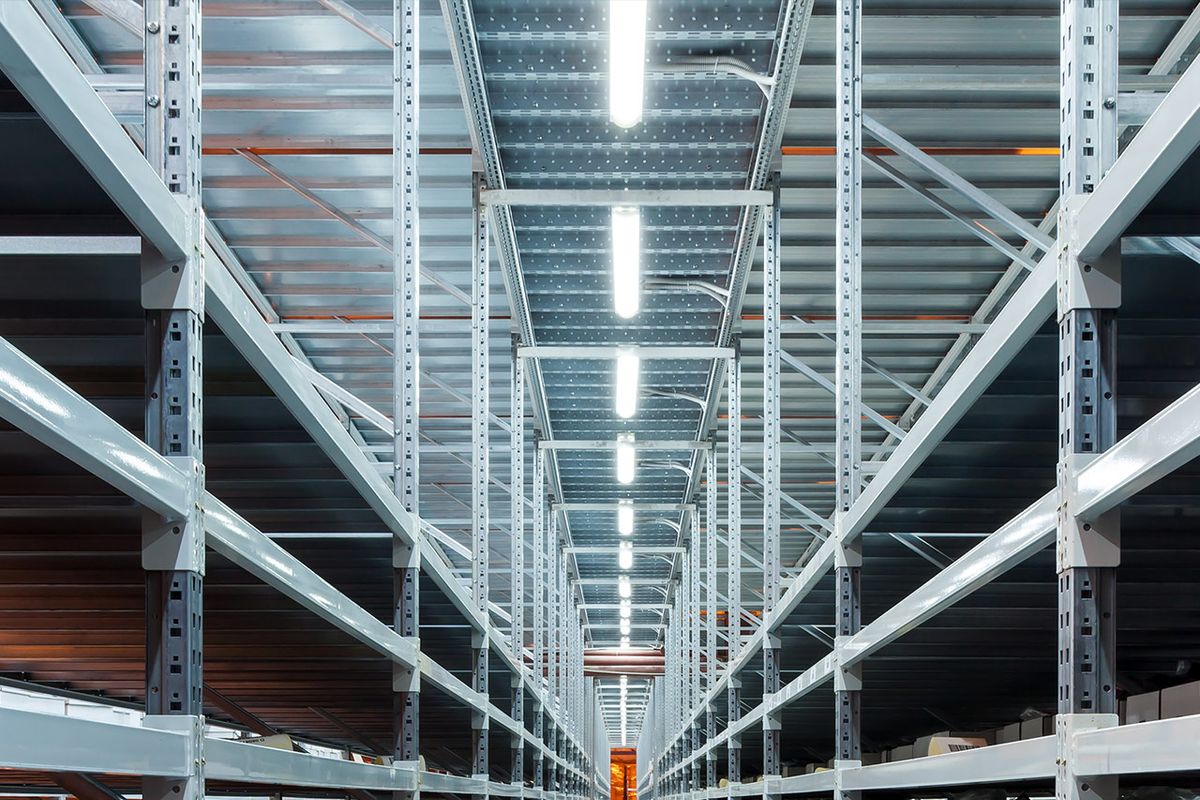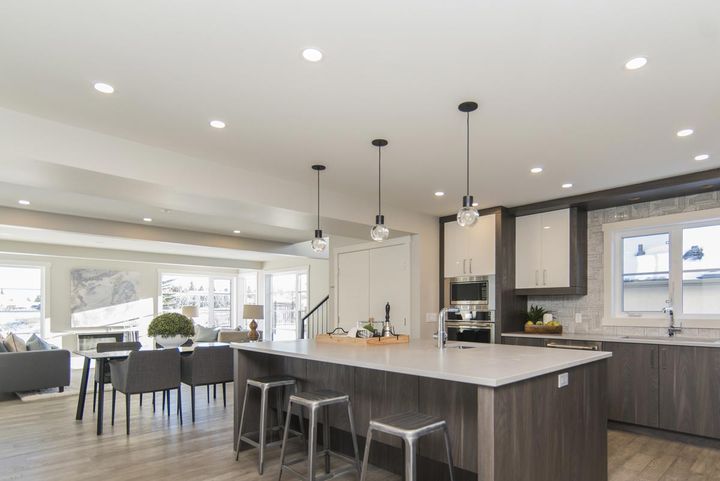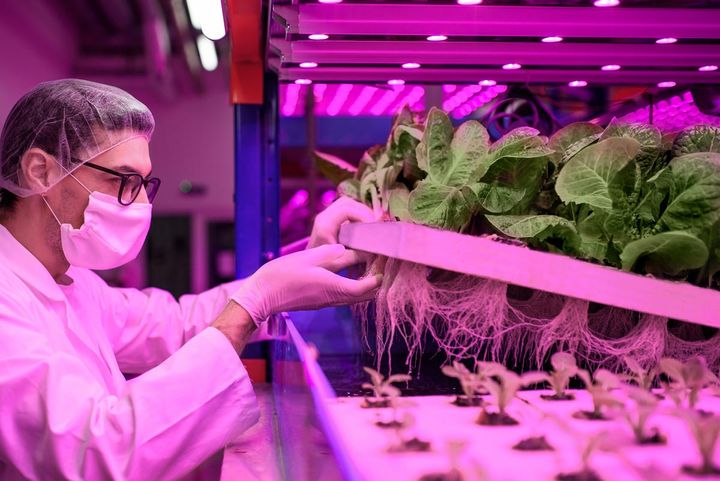LED T8 Linear Tube Lamps vs. Fluorescent T8s

Although LED T8s have not been around long enough to produce a thick memoir, there are some interesting things to note about why they exist. A few years ago, there was concern that the rare earth metals used in fluorescent tube lamps might start getting significantly more expensive for the U.S. to purchase from China. Light bulb manufacturers began an arms race to develop an affordable and effective LED T8 replacement tube.
A sustained sharp increase in the price of phosphors never really happened. And so LED T8s have gained momentum in their evolution, organically evolving to better perform well in certain applications. Their price point has decreased, and their performance has gone up. And now, LED T8 linear lamps are certified to be high quality, high efficiency lighting products.

However, LED T8s continue to be very controversial – even divisive – in the lighting world. Many people think they’re great; but some people think their existence is entirely unnecessary. Both sides of this argument tend to contextualize their visions of the merits and pitfalls of the LED T8 in a comparison with the merits and pitfalls of the traditional fluorescent T8 tube light.
LED T8 Linear Light Bulbs vs. Fluorescent T8 Linear Light Bulbs
First of all, the merits of fluorescent T8s cannot be overstated. Fluorescent tube lamp technology has been developed over decades and is now basically mastered. Fluorescent T8s are extremely inexpensive and have ridiculously long rated lives. In fact, in some cases, fluorescent T8s can last as long as LED T8s.
And it doesn’t stop there. The production of light with fluorescent tube lamp technology works really, really well. It is probably at its peak in terms of performance and cost. Fluorescent T8 light bulbs can last 50,000 hours. And despite their not-always-positive reputation for rendering color, fluorescent T8s can achieve high color rendering indexes (CRIs). But, it must be clearly noted, fluorescent T8s get more expensive as you seek a higher CRI.
And in terms of cost, let’s just say it straight: In many applications, the LED T8 tube light’s initial cost doesn’t make sense when compared to the relatively low cost of fluorescent T8s. For example, at this stage of the game, lighting large spaces like classrooms or large offices is a job better performed by fluorescent T8s than LED. First, there’s the cost. Fluorescent tube lamps last long, cost little, and give off crisp light. Furthermore, fluorescent tubes give off light omnidirectionally, casting light upwards toward the ceiling as well as downward. This makes a space look more fully lighted. LEDs, in contrast, are generally more unidirectional and cast light downward only. This is something that will change, but, currently, this is just affirmation of the fact that fluorescent T8s reign supreme for some applications.
There are shortcomings in fluorescent light bulbs.
Fluorescent T8s often take a while to come on; they’re adversely affected by temperature (and somewhat sensitive about it); they can flicker often; and if the lights are turned on and off frequently, as in laundry room or bathroom applications, for example, they can fail quite prematurely, to the dismay and annoyance of everyone involved. And then there’s that toxic mercury vapor which poses danger to humans and the soil on which we live.
Plus, fluorescent tube lamps require a ballast, too: A component that will also, eventually, fail.
Now, let’s give some attention to LED T8 tube lamps. It should first be noted that LED T8s have a higher initial cost than fluorescent T8s, which can be purchased for only a few dollars in some cases.
Despite their higher cost, LED tube lights have some nice advantages. First of all, LEDs love the cold, so they are great in cold weather applications, unlike fluorescent T8s, which become seemingly infirm in the cold, slow to turn on and flickers. Basements, sheds, garages, entryways, covered pathways, bathrooms, etc., are great places to utilize the LED T8 linear lamp.
You also have to consider that if an LED T8 tube breaks, it will not release harmful mercury vapor into the air. Mercury from fluorescent tubes can get into the air but also the water supply, which is why you have to recycle them. For some people, the whole mercury thing is enough to open their minds to alternatives to the long-reigning fluorescent T8.
Plus, you can get better color rendering with LEDs than with fluorescent lights. Fluorescent lights work by transforming ultraviolet radiation into visible light. UV light is the part of the light spectrum that’s just past the blue and violet area. Even with a rudimentary understanding of light, it’s easy to see how the result of transforming UV light into visible light would leave you with a bluish result. As a result, in general, fluorescent lights do not render reds well.
LEDs exude very little to no UV or infrared radiation, both of which fade the color of displayed objects including wall art, furniture, and even rugs. Fluorescent tubes do indeed fade sensitive belongings over time.
Finally, LED tubes do not generally require a separate power supply. They run on line voltage and require no separate drivers, ballasts, or transformers. That’s one less thing that can break. In conclusion, LED T8s are more expensive than fluorescent T8s, but LEDs are safer, render color better, require no ballasts, operate better in the cold, and do not decline significantly in lifespan due to frequently switching on and off. This means that there are some applications, like cold places, bathrooms, basements, laundry rooms, kitchens, closets, storage rooms, walk in refrigerators or freezers, or places where there’s a risk of broken light bulbs like gyms, warehouses, etc., for which LED T8s might be the better choice. And since LED T8s don’t weaken with frequent switching on and off, they are great for use with occupancy sensors.
Check back to see new articles and guides, or feel free to click another article to experience more great insights and advice.



